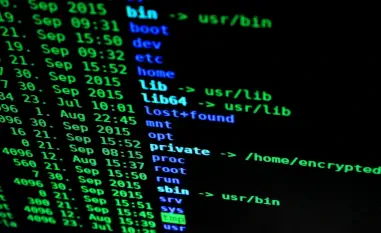In an era where connectivity drives innovation, the proliferation of IoT (Internet of Things) and OT (Operational Technology) devices has created a double-edged sword, offering unprecedented efficiency while exposing critical systems to escalating cyber threats. According to the Zscaler ThreatLabz 2024 report, IoT malware attacks have surged by a staggering 45%, underscoring how these devices often serve as vulnerable entry points for cybercriminals into corporate networks. A single compromised device can unravel an entire system, putting sensitive data and operations at risk. Meanwhile, the convergence of IT and OT environments amplifies these dangers, as outdated systems and insecure protocols persist in many industries. As attackers grow more sophisticated, traditional security measures fall short, raising a pressing question about the viability of newer strategies. Zero Trust, with its principle of “never trust, always verify,” emerges as a potential game-changer in building resilience against these pervasive threats, offering a framework to secure increasingly interconnected infrastructures.
1. Understanding the Growing Threat Landscape for IoT and OT
The vulnerability of IoT devices remains a critical concern in the cybersecurity domain, primarily due to their often inadequate built-in security features. Many of these devices are designed for functionality over protection, leaving them susceptible to exploitation by malicious actors. A compromised IoT device, such as a smart camera or sensor, can act as a gateway for attackers to infiltrate broader corporate networks, potentially leading to data breaches or operational disruptions. The scale of this issue is evident in the rising number of attacks, with malware specifically targeting IoT systems becoming more prevalent. This lack of inherent security in hardware design, combined with the sheer volume of connected devices in use today, creates a vast attack surface that cybercriminals are eager to exploit. Addressing this challenge requires a shift from reactive to proactive security measures that can anticipate and mitigate risks before they escalate into full-blown crises.
Beyond IoT, OT environments face equally daunting challenges due to their reliance on aging infrastructure and outdated technology. Over 50% of OT devices operate on obsolete operating systems that have reached the end of their lifecycle, harboring known vulnerabilities that attackers can easily exploit. Additionally, more than 20% of internal network connections in these systems use risky legacy protocols, further compounding the risk. The inability to patch critical assets in a timely manner, often due to operational constraints, leaves these environments exposed. Moreover, the increasing integration of cloud services into OT systems introduces new vulnerabilities, as connectivity expands the potential points of entry for threat actors. This convergence of IT and OT underscores the urgent need for robust security frameworks that can protect against both internal and external threats, ensuring that critical infrastructure remains secure in an increasingly hostile digital landscape.
2. Major Threats Targeting IoT and OT Systems
Ransomware continues to dominate as one of the most severe threats to IoT and OT environments, with the manufacturing sector bearing the brunt of these attacks. For two consecutive years, this industry has accounted for 36% of all IoT malware incidents, highlighting its vulnerability due to heavy reliance on connected OT systems. Data centers, increasingly classified as critical infrastructure, also face heightened risks, as attacks on these facilities can disrupt entire service chains and cripple productivity. The widespread use of service provider infrastructures by companies further amplifies the potential impact of such attacks. Cybercriminals target these sectors knowing that downtime or data loss can have catastrophic consequences, often demanding hefty ransoms to restore access. This persistent threat necessitates advanced defense mechanisms capable of thwarting ransomware before it can infiltrate and paralyze essential systems.
Specific industries like manufacturing and transportation remain prime targets, with over 50% of cyberattacks focusing on these sectors due to their extensive use of connected devices. Among the most compromised IoT devices are routers, alongside data collection terminals, which are especially prevalent in retail and account for nearly 80% of vulnerabilities in that sector. Command injection flaws represent around 75% of exploited vulnerabilities, enabling attackers to execute unauthorized commands and install malicious scripts. Malware families such as Mirai and Gafgyt contribute to 50% of malicious payloads, with others like Mozi and VPNFilter also posing significant risks. These statistics paint a grim picture of the current threat environment, where attackers continuously refine their tactics to exploit weaknesses in both hardware and software, emphasizing the need for comprehensive security strategies that address these specific attack vectors.
3. Leveraging AI for Enhanced IoT and OT Security
Artificial Intelligence (AI) is reshaping the landscape of IoT and OT security, serving as both a tool for attackers and a critical asset for defenders. On the offensive side, cybercriminals use AI to automate and scale their attacks, identifying vulnerabilities and crafting sophisticated malware with unprecedented speed. Conversely, defenders harness AI to bolster their security posture, automating the detection of threats and analyzing vast amounts of data to uncover potential risks before they manifest into breaches. This dual role of AI underscores its transformative impact on cybersecurity, where the technology can either exacerbate threats or fortify defenses depending on how it is wielded. As IoT and OT environments grow more complex, the integration of AI into security protocols becomes indispensable for staying ahead of increasingly agile and resourceful adversaries.
For defenders, AI offers practical benefits that significantly enhance the management of IoT and OT security. It enables the automation of critical functions such as asset detection in sprawling, intricate environments, ensuring that no device goes unnoticed. AI also facilitates large-scale segmentation and control, allowing security teams to isolate potential threats and limit their spread. Furthermore, it helps align security policies with real-time risk assessments, ensuring that resources are directed toward the most pressing vulnerabilities. By prioritizing actions based on actionable intelligence, AI empowers organizations to regain control over their connected ecosystems, reducing the likelihood of successful attacks. This proactive approach, supported by AI-driven insights, marks a significant step forward in building resilient defenses against the evolving tactics employed by cybercriminals targeting IoT and OT systems.
4. Practical Measures to Strengthen IoT and OT Defenses
Securing IoT and OT environments begins with a thorough understanding of the attack surface, which involves discovering, classifying, and inventorying all devices, including unmanaged or shadow ones that often evade detection. This comprehensive cataloging enables security teams to identify potential vulnerabilities and prioritize remediation efforts effectively. Additionally, continuous monitoring of network logs for user access, application, and system events is crucial for detecting indicators of compromise, especially from sophisticated threat actors with prolonged dwell times like Volt Typhoon. Implementing phishing-resistant multi-factor authentication (MFA) wherever possible, alongside changing default passwords and securing administrative credentials, adds another layer of protection against unauthorized access. These foundational steps are essential for establishing a robust security baseline that can withstand the barrage of threats targeting connected systems.
Beyond initial safeguards, organizations must focus on timely updates and Zero Trust principles to fortify their defenses. Patching critical vulnerabilities and internet-connected systems swiftly, with the aid of AI-powered threat intelligence platforms, minimizes exposure to new risks. Device segmentation under a Zero Trust model—restricting access from device-to-application, user-to-application, and application-to-application through least privilege controls—prevents lateral movement by attackers and limits data exposure. Securing privileged remote access to OT systems is equally vital, using trusted, outbound-only connectivity and isolated RDP/SSH sessions to protect third-party interactions. Finally, inspecting encrypted data traffic comprehensively ensures that hidden threats are not overlooked. These actionable measures collectively enhance the security posture of IoT and OT environments, providing a multi-layered defense against the sophisticated attacks prevalent in today’s digital landscape.
5. Building Resilience Through Integrated Strategies
Addressing the security challenges of IoT and OT requires more than just technological solutions; it demands an integrated approach that combines advanced frameworks like Zero Trust with human-centric initiatives. Employee training plays a pivotal role in this strategy, equipping staff with the knowledge to recognize phishing attempts, adhere to security protocols, and respond effectively to potential incidents. This human element complements technical defenses, creating a holistic security culture within organizations. At the same time, the adoption of Zero Trust principles ensures that every access request is rigorously verified, regardless of its origin, reducing the risk of insider threats and external breaches. By blending these approaches, companies can build a resilient security posture that addresses both the technical vulnerabilities and the behavioral factors that often contribute to successful cyberattacks.
Service providers also bear a significant responsibility in this interconnected ecosystem, as their infrastructure often underpins critical operations across industries. Enhancing security measures and optimizing response times are imperative for these entities to meet the demands of growing IT and OT convergence. A rapid and effective reaction to threats can mean the difference between a contained incident and a widespread disruption. In a connected world, resilience hinges on the ability to anticipate, detect, and mitigate risks in real time. Encouraging collaboration between organizations and service providers fosters a shared commitment to security, ensuring that vulnerabilities in one segment do not cascade into systemic failures. This collective effort is vital for safeguarding critical infrastructure against the relentless evolution of cyber threats targeting IoT and OT environments.
6. Reflecting on Past Lessons for Future Security
Looking back at the threat landscape over recent years, it has become evident that the security of IoT, OT, data centers, and supply chains demands far greater attention than it often receives. The persistent targeting of these systems by sophisticated malware and ransomware underscores the limitations of traditional defenses against modern cyber threats. Adopting Zero Trust frameworks has proven to be a pivotal shift for many organizations, offering a structured approach to verify every access attempt and minimize vulnerabilities. This retrospective analysis highlights how integrated security strategies, supported by advanced technologies, are essential in countering the escalating risks. Moving forward, the lessons learned from past challenges should guide the development of more robust defenses, ensuring that critical systems remain protected against increasingly complex attack methodologies.
As a next step, organizations must commit to continuous improvement by regularly updating their security protocols and investing in cutting-edge solutions like AI-driven threat intelligence. Collaboration across industries and with regulatory bodies can further strengthen defenses, creating standardized practices that elevate security benchmarks. Prioritizing rapid response capabilities and fostering a culture of vigilance will be crucial in mitigating future risks. Additionally, exploring emerging technologies and adapting Zero Trust principles to new threat vectors will ensure that IoT and OT environments are not left behind in the race against cybercriminals. These actionable measures, rooted in past experiences, provide a roadmap for building a secure digital future where connectivity does not come at the cost of vulnerability.













